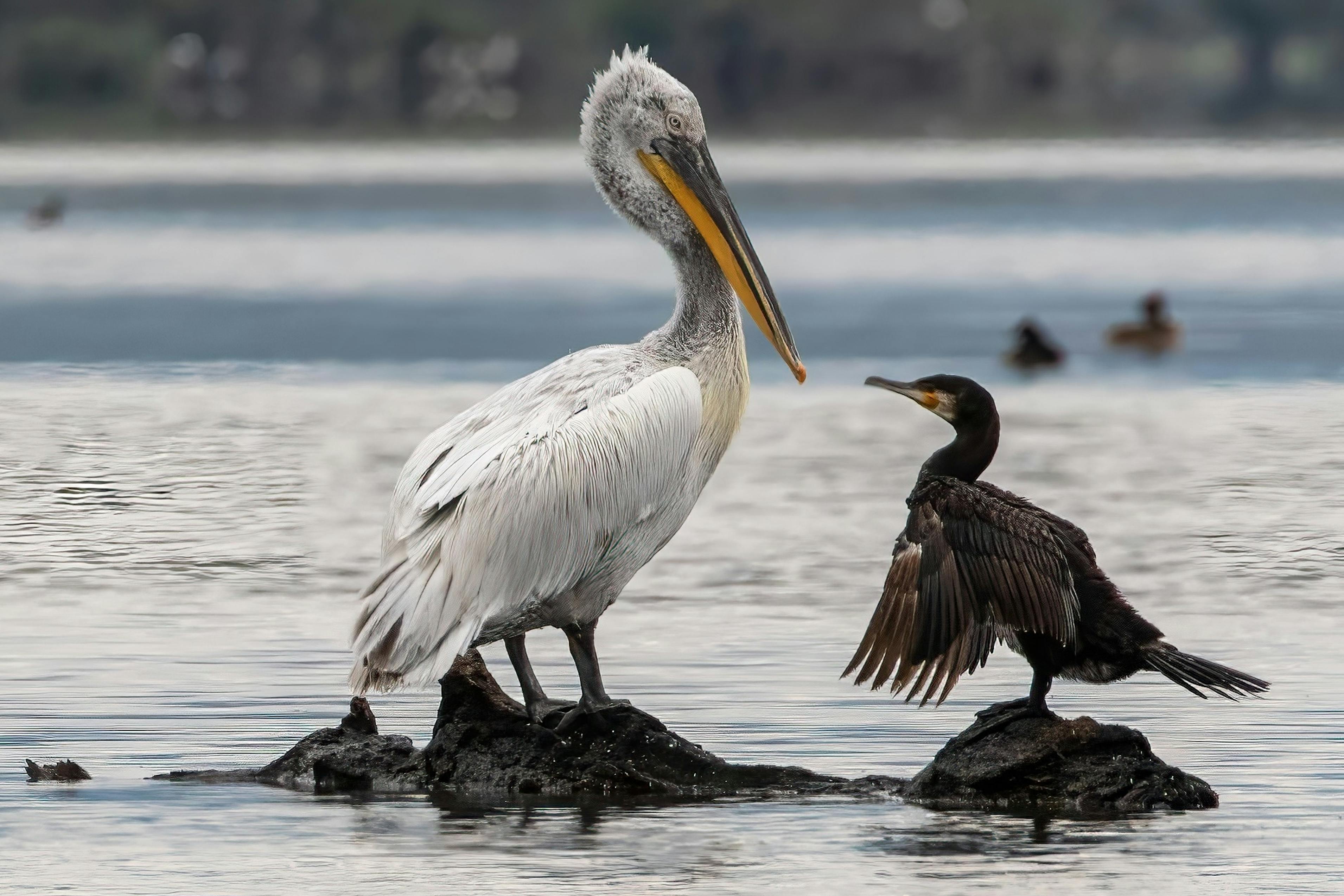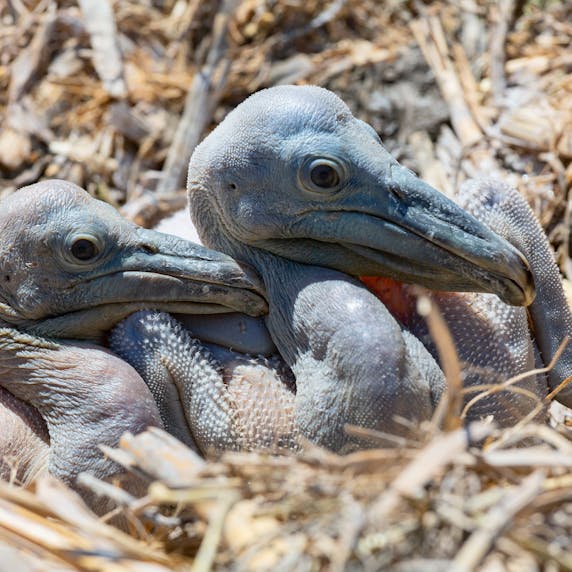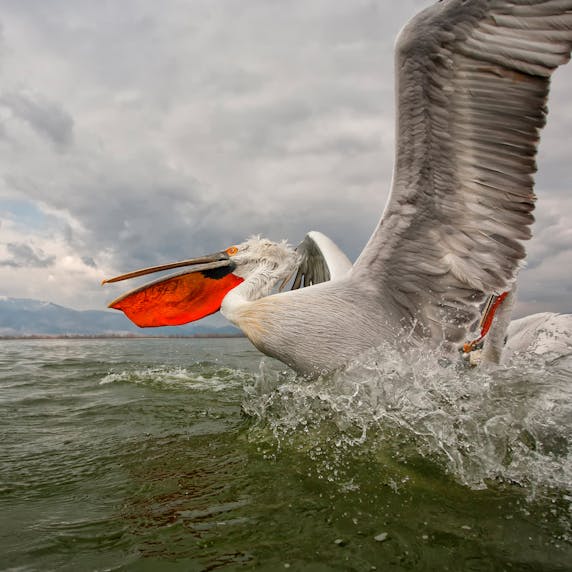
Right now, Rotterdam Zoo is home to the largest group of Dalmatian pelicans in the Netherlands, but that could change. In fact, this large marsh bird used to occur in the wild in the Netherlands. That is why Rotterdam Zoo is assisting in scientific research to see if it is possible to get the Dalmatian pelican back into Dutch nature.
Pelecanus crispus

Up to 50 years
1.6 – 1.8 metres
13 kilograms
The Dalmatian pelican is one of the largest and heaviest birds that can fly. It is recognisable by its long beak with a throat pouch, which it uses to catch fish. Pelicans have four toes on each foot, with webbed feet in between to help them swim.
The most striking feature of the Dalmatian pelican is the messy tuft of feathers on its head. In most other pelican species, the crown is much smoother or has a kind of “crest” on the back of the head. The plumage of the Dalmatian pelican is silvery white, with dark grey wing tips.
The Dalmatian pelican is a true water bird, which mainly lives in marsh and coastal areas. Nowadays, it can be found in Southeast Europe, the Nile Delta in Egypt and in Asia. The Dalmatian pelicans in Asia are migratory birds. They breed in Kazakhstan, Mongolia and southern Russia and spend the winter in Iran, Iraq, India and China. The European population migrates more locally.

Dalmatian pelicans mainly eat fish. They like to hunt together with cormorants. When cormorants dive, they often chase the fish. The fish that swim to the surface fall prey to pelicans, which catch them with their large beaks just below the water's surface. In this way, the pelican makes good use of the prey that escapes the cormorants. But cormorants and pelicans also sometimes steal fish from each other, sometimes even from each other's beaks!

Dalmatian pelicans often travel and nest in groups. In a nesting colony, the young are often better protected from predators than when a pelican pair breeds alone. These colonies can consist of just a handful of pairs, but colonies of up to 250 pairs have also been observed! Dalmatian pelicans often hunt in groups as well.

The mating season for Dalmatian pelicans begins around March or April. They form new pairs every year. During the mating season, the pelicans' normally yellow throat pouch turns bright orange to indicate that the pelican is ready to mate. Although pelicans do not normally make much noise, this changes during the mating season, when they use a range of deep, “barking” or “blowing” sounds.

A pelican that has just hatched from its egg is bald and still very dependent on its parents. Both parents care for the young: while one sits on the nest, the other searches for food. For the first few weeks, the young are fed by their parents, but after about twelve weeks, they are big enough to hunt for themselves. When the pelican is three or four years old, it is fully grown.

Little is known about the pelican's natural predators. An adult pelican is large enough to protect itself against most predators in its habitat, especially when it is in a group. However, pelican nests are raided by dogs, foxes, wolves, jackals, lynxes, wild boars and gulls. For this reason, Dalmatian pelicans prefer to build their nests on isolated islands that are difficult for predators to reach.

Until the Middle Ages, the Dalmatian pelican was widespread throughout Europe. The Dutch marshes were the ideal place for pelicans to fish and breed. But when hunting of pelicans increased in the 15th century and the peat bogs were increasingly drained, the Dalmatian pelican disappeared from the Netherlands.
In other parts of its habitat, there are still quite a few Dalmatian pelicans. There, the Dalmatian pelican suffers from agricultural toxins in the water and hunting. That is why the species has the status “Near Threatened”.

Together with a large number of nature conservation organisations, Rotterdam Zoo investigated whether the Dalmatian pelican could soon return to the Netherlands and Flanders. The investigation showed that a number of areas, such as the IJsselmeer and the Biesbosch, now offer enough fish and nesting sites for the pelican! Because the Dalmatian pelican is unlikely to fly here on its own, the possibility of releasing the pelican into the wild is being explored. This requires careful research into what is involved in reintroducing such a large water bird and what impact this will have on Dutch nature.

Rotterdam Zoo coordinates the European population management programme for Dalmatian pelicans. Based on the pedigree of pelicans in zoos, the coordinator determines which animals are best suited to each other for producing healthy offspring. These fledgelings are then moved to other zoos to form the next generation. In this way, we are building up a healthy population as a reserve for wild animals, with the ultimate goal of returning pelicans to their natural habitat when conditions are favourable.

